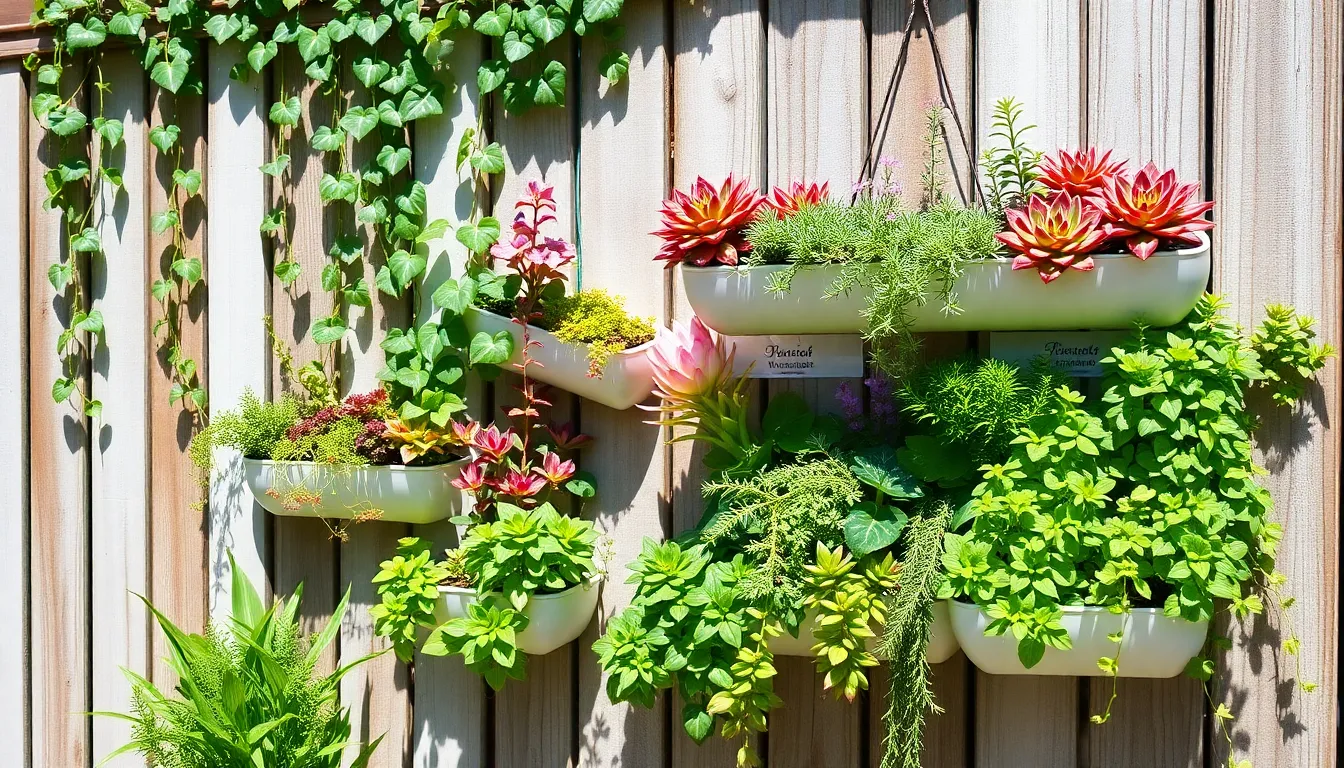Imagine transforming a bare wall into a lush, living tapestry of greenery right in your living room or backyard. Vertical gardening is not only a space-saving wonder but also a creative way to bring nature closer to your daily life. Whether you’re a novice gardener just getting your hands dirty or a seasoned green thumb looking to try something new, creating a vertical garden offers a unique challenge and reward. This form of gardening allows you to maximize your growing area, turning even the tiniest spaces into vibrant displays of life.
In this article, we will guide you through the essential steps to create your own vertical garden, from choosing the right plants to selecting the perfect structure. You’ll discover how to optimize sunlight exposure, maintain proper watering, and ensure your vertical garden thrives throughout the seasons. While vertical gardening can seem daunting at first, our practical advice will demystify the process, making it both accessible and fulfilling. Prepare to embark on a journey that not only elevates your gardening skills but also enhances your home with natural beauty.
Select an Ideal Garden Location
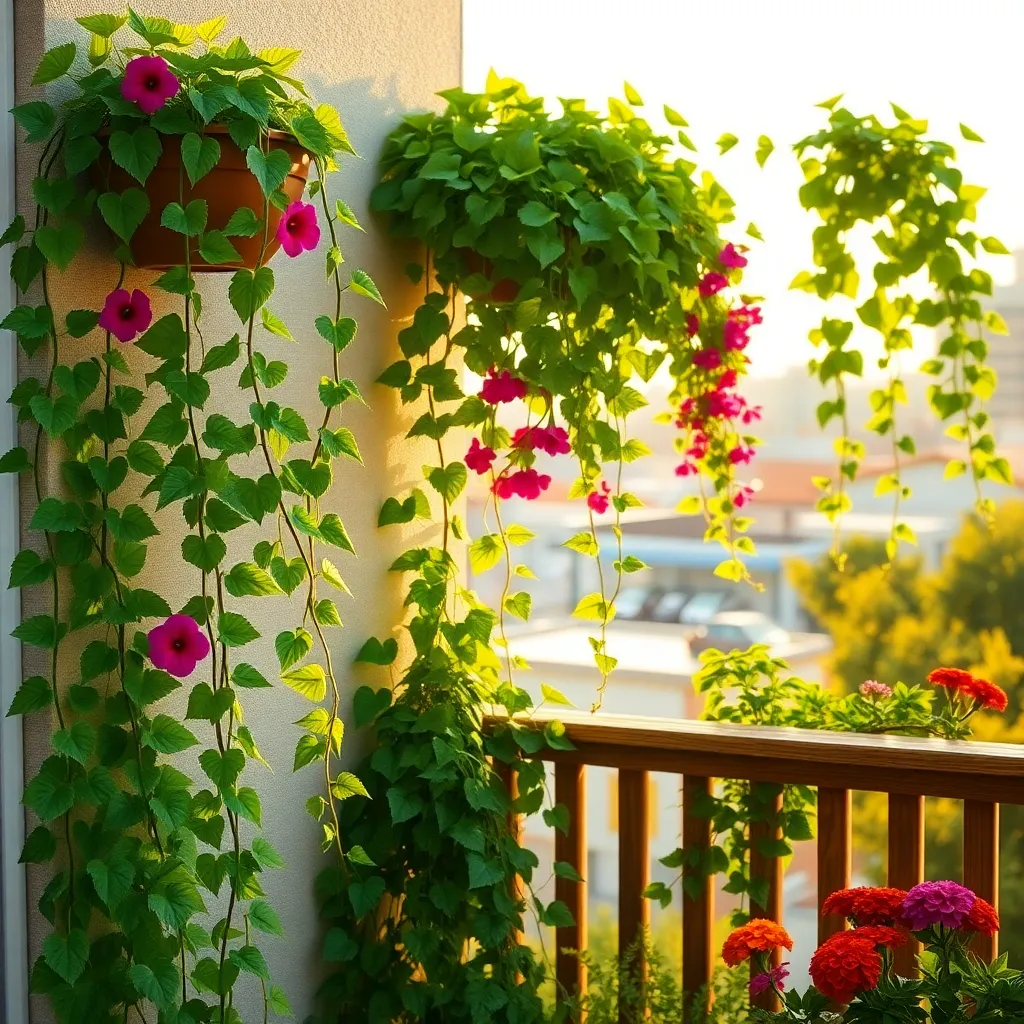
Choosing the right location for your vertical garden is crucial for its success. First, assess the available sunlight in potential areas, as most plants require at least six hours of direct sunlight daily.
Consider the structural support your chosen location can provide. Vertical gardens can be heavy, so ensure that walls or fences are sturdy enough to hold the weight.
It’s important to evaluate the accessibility of water sources in your chosen spot. Installing a drip irrigation system can be beneficial, especially if your garden is in a location that’s hard to reach with a hose.
For beginners, starting small can be advantageous, allowing you to manage and learn as you go. Select an area that’s easy to monitor so you can quickly address any plant health issues.
Choose Suitable Vertical Structures
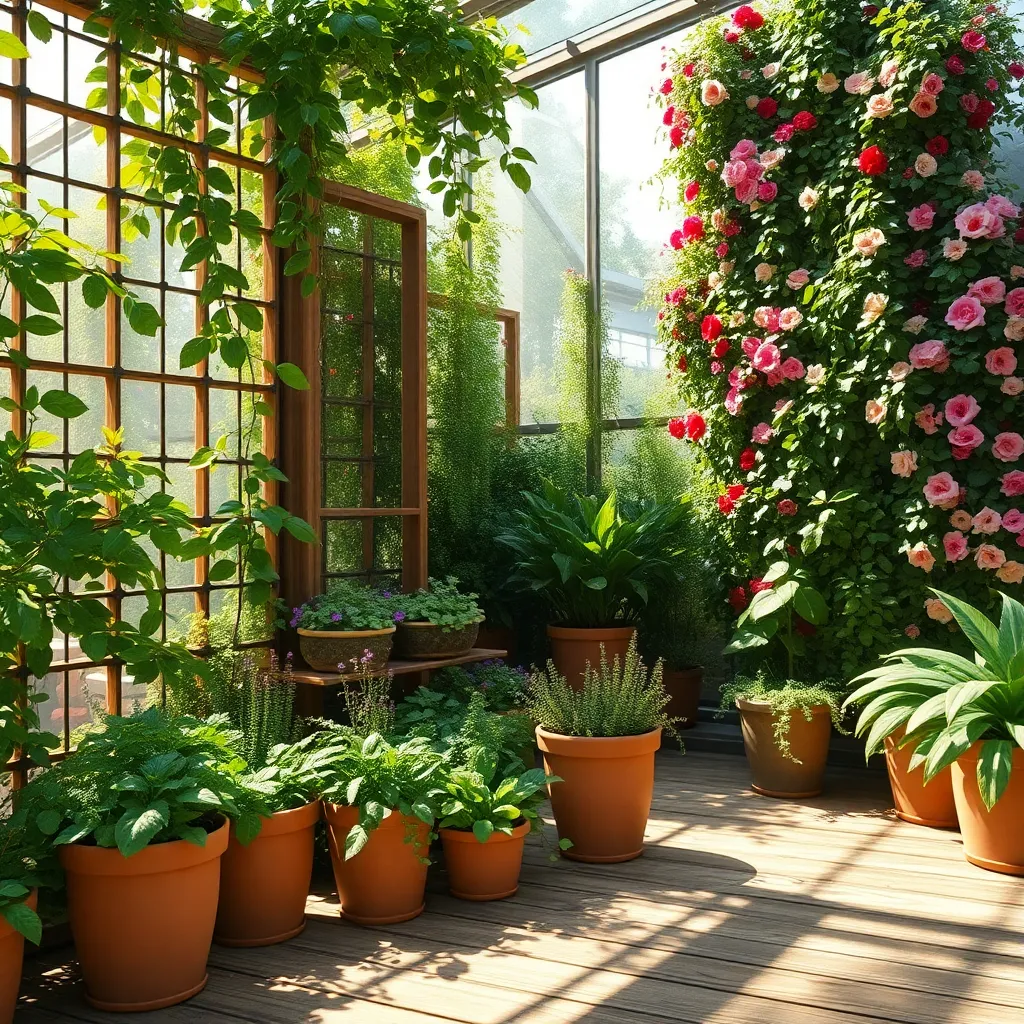
To build a successful vertical garden, it is crucial to choose the right vertical structures. These structures can range from simple trellises and stakes to more complex systems like wall-mounted planters or tiered shelves. Consider using sturdy materials such as metal, wood, or PVC that can withstand weather variations and support the weight of your plants.
For beginners, a wooden trellis or metal grid can be a fantastic starting point. Such structures are easy to install and can support a variety of climbing plants, like beans or peas, which thrive when given vertical space. Ensure that the structure is securely anchored to prevent it from toppling over as your plants grow and become heavier.
Advanced gardeners might explore using hydroponic systems or vertical garden towers, which allow for more intensive cultivation. These systems can be highly efficient, providing plants with nutrient-rich water directly to their roots, thus optimizing growth. Such setups require more initial investment and maintenance but can lead to higher yields and more diverse planting options.
When selecting a structure, think about the specific needs of the plants you intend to grow. Some plants, like tomatoes or cucumbers, need robust support as they mature and bear fruit, while others, like herbs or strawberries, might do well in pocket planters or hanging baskets. Tailoring your structures to your plant selection ensures that you provide the best environment for healthy growth.
Pick Appropriate Plant Varieties
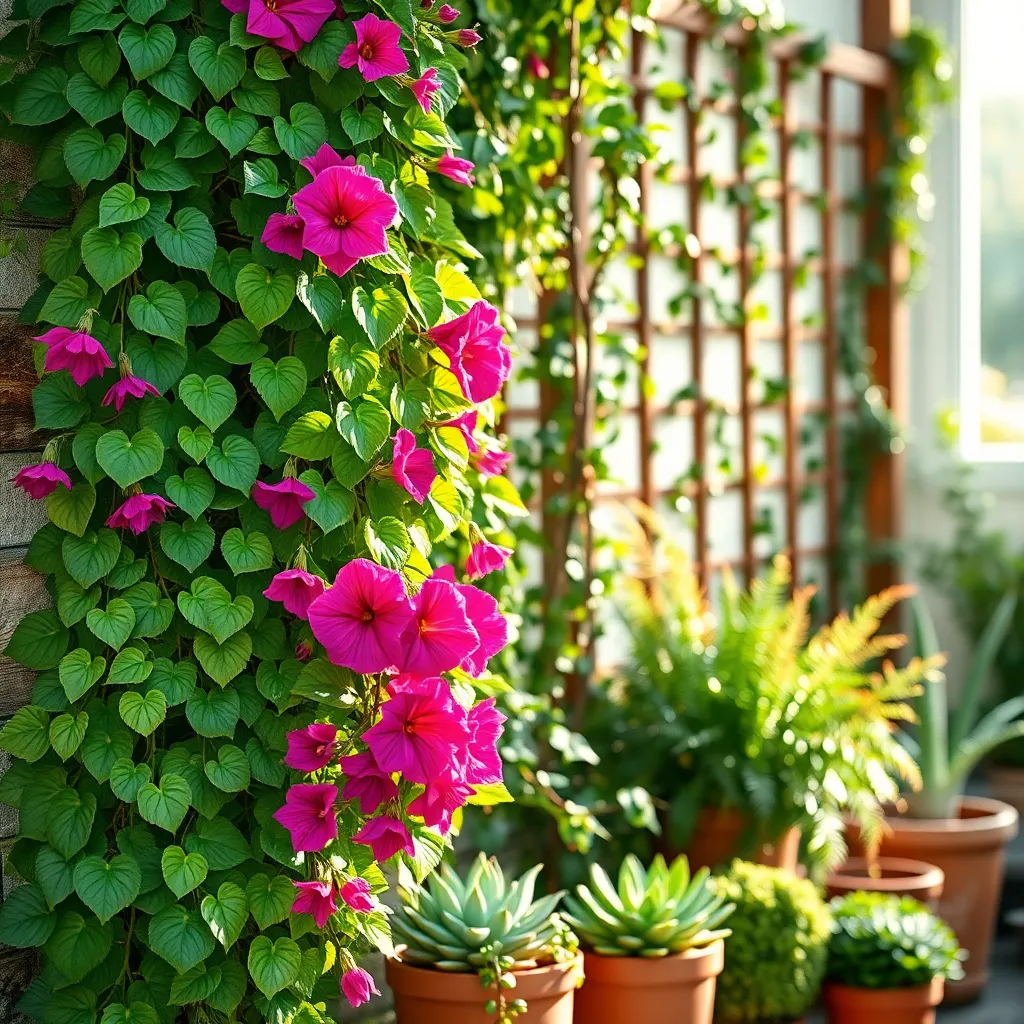
When creating a vertical garden, it’s essential to select plant varieties that thrive in your specific environment and suit the vertical setup. **Climbing plants** like peas and beans are excellent choices as they naturally grow upwards, needing minimal support to flourish.
Consider the sunlight exposure your vertical garden will receive throughout the day. For sunny spots, opt for **sun-loving plants** such as tomatoes and strawberries, while **shade-tolerant varieties** like ferns and hostas are perfect for less sunny areas.
It’s important to match plant needs with your watering habits. Choose **drought-resistant varieties** like succulents if you prefer low-maintenance gardening, whereas **moisture-loving plants** like lettuce and basil will need more frequent watering and richer soil.
Experimenting with a mix of edible and ornamental plants can add both beauty and utility to your vertical garden. Include herbs like thyme or oregano for a fragrant and culinary touch, and consider flowering vines such as **clematis** to add vibrant colors and attract pollinators.
Install Efficient Watering System
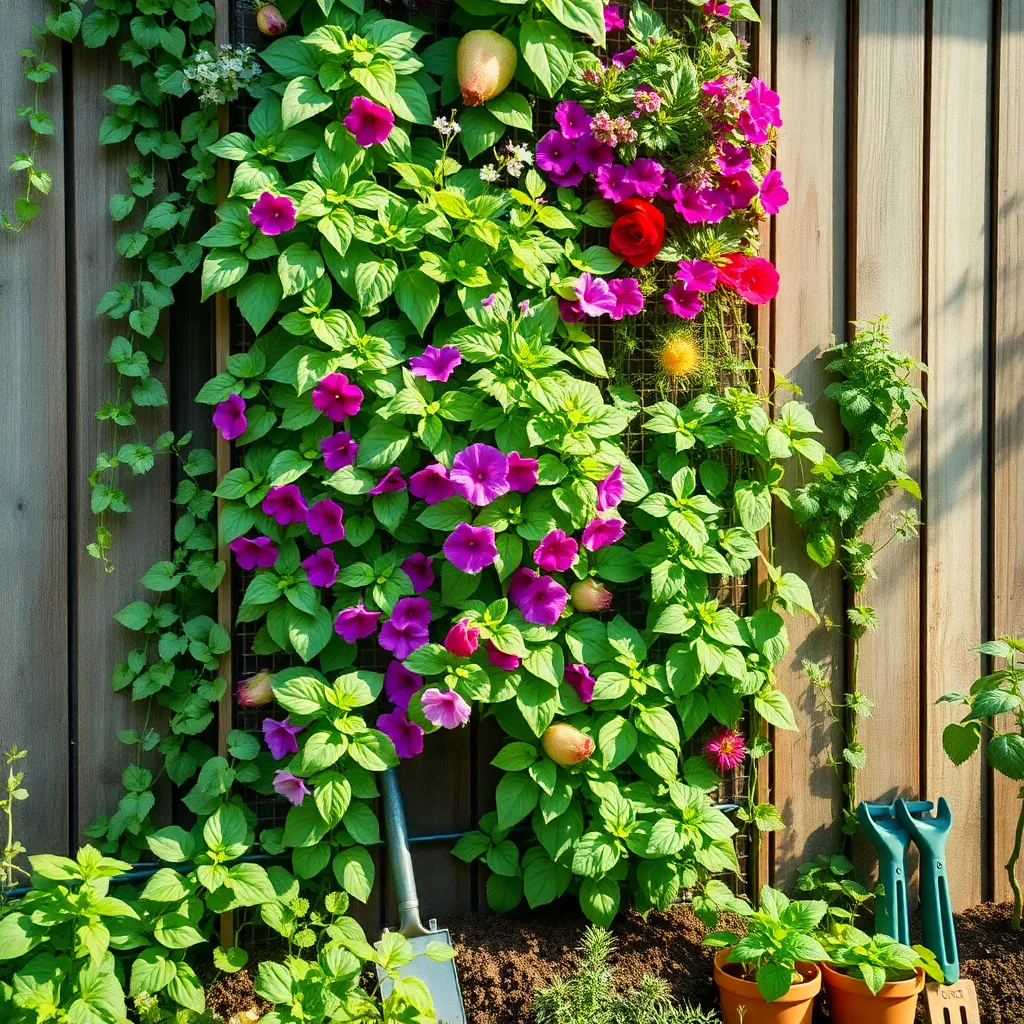
To ensure your vertical garden thrives, installing an efficient watering system is essential. A drip irrigation system is ideal, as it delivers water directly to the roots, minimizing waste and promoting healthy plant growth.
Consider using a timer to automate your watering routine, ensuring plants receive consistent hydration without over-watering. Smart timers can be set to adjust based on weather conditions, which is particularly useful for busy gardeners.
Focus on adjusting the watering frequency to suit the specific needs of your plants. For example, succulents require less frequent watering compared to moisture-loving ferns or herbs.
For those looking to conserve water, incorporating a rainwater collection system can be a sustainable choice. Harvested rainwater can be used to supply your irrigation system, providing a cost-effective and eco-friendly solution.
Maintain Regular Garden Care
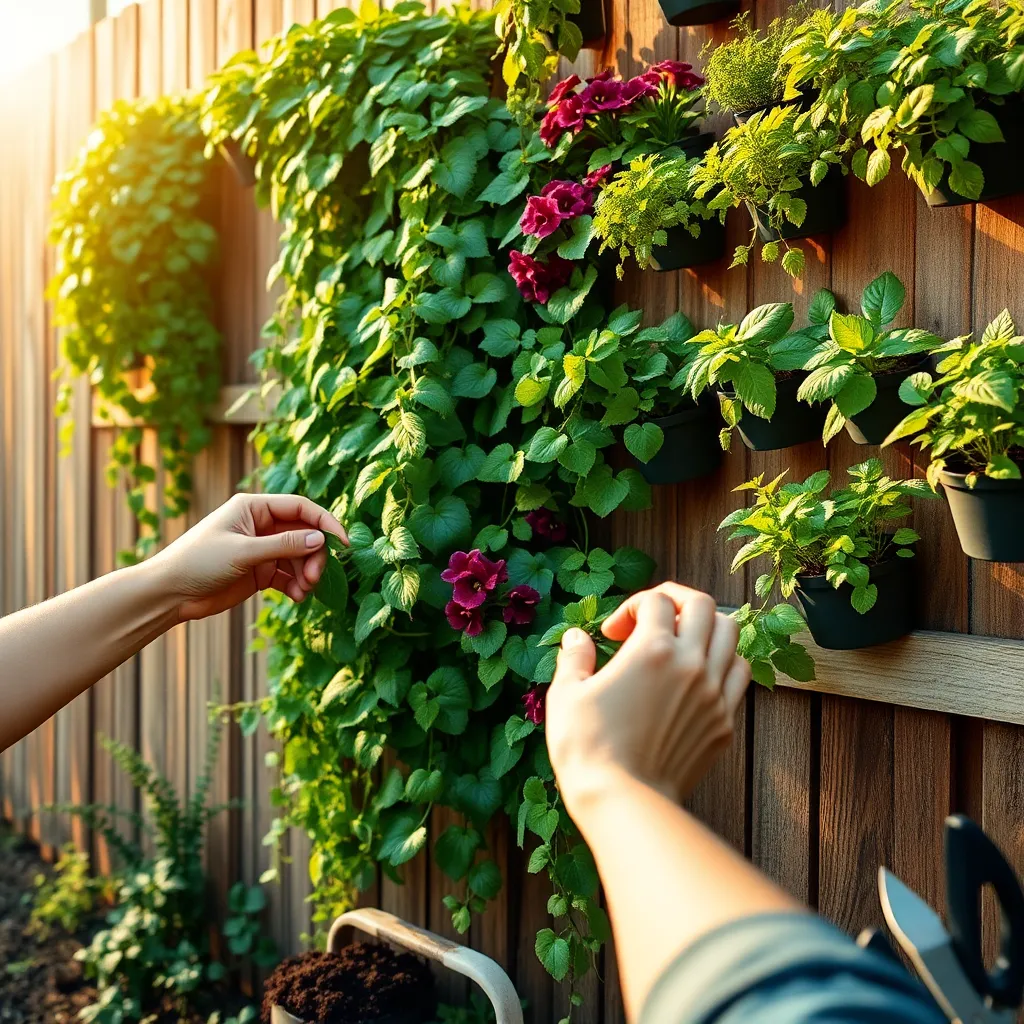
Maintaining regular garden care is essential for the success of your vertical garden. Start by establishing a consistent watering schedule that suits the specific needs of your plants. To ensure optimal growth, observe your plants carefully and adjust the watering frequency based on their response to environmental conditions.
Use a high-quality potting mix that provides ample nutrients and good drainage. This type of soil will support healthy root development and reduce the risk of waterlogging, which can be detrimental to vertical gardens. For beginners, a pre-mixed potting soil specifically designed for vertical gardens can simplify the process.
Regularly check your plants for signs of pests or diseases, as these can spread quickly in the confined space of a vertical garden. Employ organic pest control methods such as neem oil or insecticidal soap to manage any issues that arise. Advanced gardeners might consider introducing beneficial insects like ladybugs or lacewings to naturally control pest populations.
Pruning is another key aspect of maintaining your vertical garden. Trim dead or overgrown foliage to promote new growth and maintain the aesthetic appeal of your garden. Additionally, pruning helps improve air circulation among plants, reducing the likelihood of fungal diseases.
Fertilizing your plants periodically will provide them with the essential nutrients they need to thrive. Use a balanced, water-soluble fertilizer every four to six weeks, following the manufacturer’s instructions for application rates. For those with more experience, customizing the fertilizer based on plant type and growth stage can yield even more impressive results.
Conclusion: Growing Success with These Plants
In embarking on the journey to create a vertical garden at home, you’ve uncovered five key relationship concepts: collaboration with your partner, nurturing growth through shared experiences, fostering communication while planning together, cultivating patience as you watch your garden—and relationship—flourish, and celebrating achievements, big or small, as a team. These concepts not only enhance your green space but also enrich the soil of your relationship, allowing it to become more vibrant and resilient.
As a next step, why not schedule a weekend afternoon to start designing your vertical garden together? This can be an exciting bonding activity to bring you closer and bring your shared vision to life. Remember, every seed you plant in your garden is a seed planted in your relationship.
To ensure these insights are always at your fingertips, save or bookmark this article for future reference. This way, whenever you need a reminder of how to nurture both your garden and your relationship, you’ll know exactly where to look.
Looking forward, nurturing your garden is a metaphor for your relationship success. As you tend to it with love and care, it will grow stronger and more beautiful with time. Embrace this opportunity to cultivate a thriving partnership.

